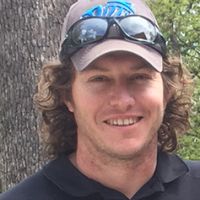Saneiyan et al., 2018
Understanding flow transport in the Critical Zone using 3D electrical resistivity imaging
Saneiyan, S., Robinson, J., Slater, L., Brantley, S.L., Mount, G.J., Forsythe, B. (2018)
SAGEEP 2018 Meeting. 25-29 March, Nashville, TN
-
Christina, INVESTIGATOR
-
National, Eel, Luquillo, Shale Hills, INVESTIGATOR, COLLABORATOR
-
Shale Hills, INVESTIGATOR, COLLABORATOR
-
Shale Hills, STAFF
Abstract
There is a need to study hydrological processes within the Earth’s critical zones since these near surface environments determine our agricultural productivity and affect water quality. Water transport within the near surface can play a controlling role in nutrient and contaminant transport and hence water quality. Critical zone observatories (CZO) are now active research areas to study these environments within different historical land-use regions.
The geophysical method, electrical resistivity imaging (ERI) is a well-established method in hydrological studies, since it is sensitive to subsurface resistivity contrasts and pore fluid conductivity changes. In tracer studies, time-lapse ERI can remove the ambiguity of the interpreted resistivity structure by imaging changes over time.
Garner Run is an upland catchment within the Shavers Watershed at Shale Hills CZO, PA where previously a 2D-ERI study was conducted (Rutgers SEG student chapter, hydrogeophysics workshop, 2016). This study investigated the subsurface flow architecture along two hillslopes, Tussey Mountain and Leading Ridge, and found electrical contrasts supported the previous geochemical evidence of shallow interflow.
To further investigate this area, we performed two 3D-ERI tracer studies on Tussey Mountain and the Leading Ridge at locations along the 2D-ERI transect (Rutgers SEG student chapter, hydrogeophysics workshop, 2017). A potassium bromide solution was allowed to percolate in shallow trenches dug directly upslope of each ERI grid. ERI measurements were collected from a 3D surface array consisting of a 12 by 4 grid of electrodes spaced 1 m apart. Our images reveal initial rapid vertical movement downward of the tracer followed by a slower horizontal movement along a boundary layer, in support of previous shallow interflow hypotheses. We also find that the spatial extent and by extension mass moments vary depending on the hillslope. Using 3D-ERI to image tracer migration provided a better understanding of the dynamic flow architecture at Garner Run.
Citation
Saneiyan, S., Robinson, J., Slater, L., Brantley, S.L., Mount, G.J., Forsythe, B. (2018): Understanding flow transport in the Critical Zone using 3D electrical resistivity imaging. SAGEEP 2018 Meeting. 25-29 March, Nashville, TN.
 This Paper/Book acknowledges NSF CZO grant support.
This Paper/Book acknowledges NSF CZO grant support.
Explore Further




